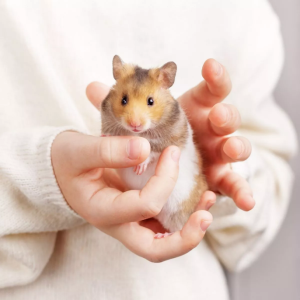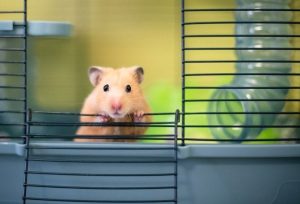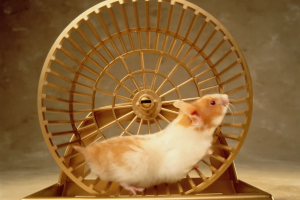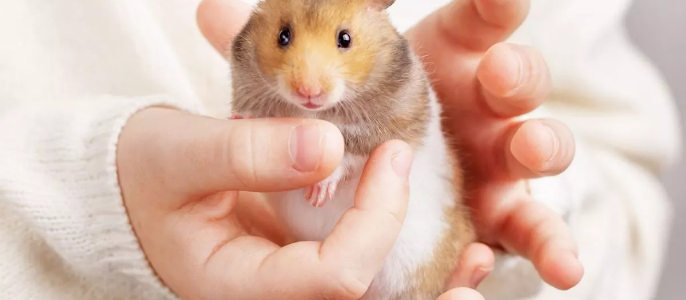
Four paws, two bright eyes, and a set of twitchy whiskers. There’s nothing cuter than a pet hamster! If you’ve been thinking about welcoming a hamster into your family, here are some basic care techniques:
Your Hamster’s Home

Hamsters need enough space to move around and play, so it’s important to choose a cage that is at least 24 inches by 12 inches, with a minimum height of 12 inches. It’s also a good idea to provide multiple levels, so that your hamster can climb and explore. You want to also provide your hamster with a deep section of the correct type of bedding so they can make a burrow and sleep underground, just like they would in the wild.
Bedding provides warmth and comfort for your little pet but also needs to work well at absorbing moisture and odors. Your hamster will spend most of their time in contact with their bedding material so it’s important to choose something safe like paper, aspen, or hemp shavings.
What do Hamsters eat?

Your hamster should always have fresh clean water and healthy food available. Feed your pet a good quality hamster chow consisting of pellets, grains, seeds, and dried veggies to help keep them healthy.
Supplement the diet every 2 or 3 days with small amounts of fresh fruit or veggies such as apples, lettuce, carrots, or spinach. Whole wheat bread or sugar-free cereal on occasion can be a nice treat for your hamster but shouldn’t be given regularly. Never feed your pet candy, chocolate, onions, junk food, or uncooked beans!
Enrichment and Exercise

Hamsters are such active animals; they need a wheel to allow them to get exercise. Hamsters can run up to 5 miles a night, therefore, are running on their wheel for long periods of time. Their wheel should be comfortable for them to run on, with a smooth and solid surface. It should be upright and most importantly large enough for you hamster to fit comfortably.

Toys are a favorite pastime for hamsters, who use them for a range of activities including chewing, climbing, exploring, burrowing, and hiding. To give enrichment for their hamsters, many hamster owners utilize paper bags, cardboard boxes with holes cut out, hideaways, and paper towel rolls. Solid connecting tunnels can also enrich the environment, but they need to be cleaned every week.
Signs of Illness & Injury

Like other pet’s hamsters can sometimes become ill or be injured. Signs that your pet hamster isn’t feeling well include dull-looking eyes, overgrown teeth, matted fur, weight loss, shaking, runny nose, and diarrhea. Respiratory illnesses producing cold-like symptoms are common in hamsters, including bacterial pneumonia, which they can catch from humans or other pets in your household.
If you think your hamster is sick—seek help from your veterinarian immediately!
Owning a hamster can be a rewarding and fulfilling experience. From their low-maintenance nature to their affectionate personalities, there are many benefits to having a hamster as a pet. Whether you’re looking for a new addition to your family or just want a furry companion, a hamster might be the perfect fit for you.






Leave a Reply